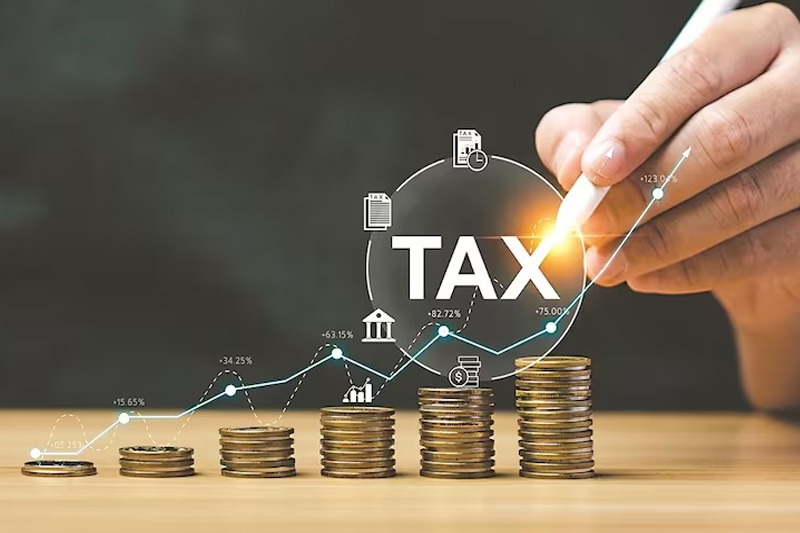Providing significant ease to government’s cash flow operations, Sri Lanka reached final debt treatment agreements with its bilateral external creditors on June 26, 2024 and with bond holders on Wednesday 03 of July.
. Agreements were concluded with the members of Official Creditor Committee and also Bilateral Debt Treatment Agreements in relation to the loans owed by Sri Lanka to Exim Bank of China

On June 26, 2024, Sri Lanka reached crucial debt treatment agreements with its bilateral external creditors. This milestone included agreements with the Official Creditor Committee (OCC) and bilateral debt treatment agreements related to loans owed to Exim Bank of China.
Through these agreements, Sri Lanka successfully concluded the treatment of its debt with major official bilateral creditors, including China, Japan, India, France, Australia, Austria, Belgium, Canada, Denmark, Germany, Hungary, Korea, the Netherlands, Russia, Spain, Sweden, the United Kingdom, and the United States of America. The total amount agreed to be treated by these lenders is USD 10 billion.
The terms of the agreement provide Sri Lanka with a five-year grace period (from 2022) for repayment and an additional 15 years until 2042 to complete the repayments.
This grace period offers a fiscal space of USD 5 billion, which Sri Lanka can strategically use to prevent another sovereign debt default. The funds that would have been allocated for bilateral debt repayment can now be redirected towards public financing, enhancing the country's ability to generate more government and export revenue.
Furthermore, the agreement has significantly reduced the country's interest payments, a major component of Sri Lanka's annual budget, thus alleviating some of the pressure on debt servicing.
After declaring bankruptcy on April 12, 2022, Sri Lanka had to suspend all projects funded by its bilateral lenders. However, following the recent agreements, Sri Lanka can now resume these infrastructure projects and initiate new ones, potentially boosting the construction industry, which once played a significant role in the economy.
Restructuring of Bonds

In addition to the bilateral debt agreements, Sri Lanka has also made progress in restructuring USD 12.5 billion of bonds with its creditors. Bondholders agreed to a 28 percent nominal reduction on the bonds during the second round of talks in Paris on July 2, 2024.
The government conducted these discussions with the Steering Committee of Bondholders, including major legal and financial advisors like Clifford Chance LLP, Lazard, White & Case, and Rothschild & Co.
The Steering Committee of the Ad Hoc Group of Bondholders, comprising ten major bondholders representing 50 percent of the International Sovereign Bonds (ISBs), held a session in Paris on June 27-28, 2024.
They agreed on core financial terms for restructuring the ISBs, outlined in a Joint Working Framework, which includes a governance-linked bond proposal.
The accrued interest amounting to around USD 2.9 billion owed to sovereign bondholders was also addressed, with bondholders agreeing to an 11 percent haircut, bringing the amount down to USD 1.66 billion.
New sovereign bonds, called plain vanilla bonds, will be issued for this adjusted sum, with a four-year maturity period and a 4 percent coupon rate. Payments will commence on September 30, 2024. Additionally, a payment of USD 225 million will be made as consideration for consent to the restructuring process.
The repayment of the outstanding debt exceeding USD 8 billion, due from 2028 onwards, will be more complex, as it is linked to Sri Lanka's economic growth progress (GDP) through Macro Link Bonds. The negotiated Joint Working Framework aims to enable a fair sharing of economic performance outcomes between creditors and Sri Lanka, ensuring that any upside payouts do not compromise the country's long-term debt sustainability.
Economic Impact and Fiscal Performance

The debt restructuring agreements have significant implications for Sri Lanka's fiscal policies and economic recovery. However, they do not provide the government with the leeway to reduce taxes or implement populist policies ahead of upcoming elections.
According to State Finance Minister Shehan Semasinghe, Sri Lanka must adhere to its agreement with the International Monetary Fund (IMF) and cannot yet consider tax reductions.
Sri Lanka's fiscal sector has demonstrated robust performance in the first four months of 2024, supported by domestic factors, decreasing inflation, and favorable economic policies. Increased revenue mobilization and a decline in government expenditure have contributed to this performance, with a primary surplus of Rs. 365.0 billion recorded in the first four months of 2024, compared to a primary deficit of Rs. 5.3 billion in the same period of 2023. The budget deficit also narrowed by Rs. 463.2 billion to Rs. 361.1 billion during the same period.
Total government revenue increased by 48.3 percent to Rs. 1,218.1 billion in the first four months of 2024, driven by aggressive tax policy measures introduced since June 2022, improvements in revenue administration, positive economic growth since the third quarter of 2023, and the gradual lifting of import restrictions. Government expenditure declined by 4.0 percent to Rs. 1,579.2 billion, with recurrent expenditure decreasing by 4.4 percent due to reduced interest payments. Capital expenditure and net lending also declined slightly.

Tax revenue saw a significant increase of 50.5 percent, achieving 29.3 percent of the annual estimate for 2024. Government borrowings for the period from January 1 to April 30, 2024, amounted to Rs. 796.5 billion, comprising domestic and foreign project/program borrowings used to finance debt service payments and development projects.
External Sector Performance
Sri Lanka's external sector showed improved performance in the first four months of 2024, with increases in inflows from workers' remittances and tourism earnings. Workers' remittances rose by 11.4 percent to USD 2,079.9 million, while tourism earnings grew by 91.9 percent to USD 1,251.6 million. Export earnings increased by 5.5 percent to USD 4,056.1 million, driven by industrial and agricultural exports. However, expenditure on imports also grew by 9.5 percent to USD 5,833.2 million, leading to a widened trade deficit of USD 1,777.1 million in the first four months of 2024 compared to USD 1,479.0 million in the same period of 2023.
Conclusion
Sri Lanka's recent debt treatment agreements with bilateral creditors and bondholders mark significant progress in the country's efforts to manage its financial crisis and pave the way for economic recovery. The agreements provide much-needed fiscal space and reduce debt servicing pressures, enabling the government to focus on strategic planning and public financing. Despite the challenges ahead, including adherence to IMF agreements and managing long-term debt sustainability, these developments offer a hopeful outlook for Sri Lanka's economic future.


